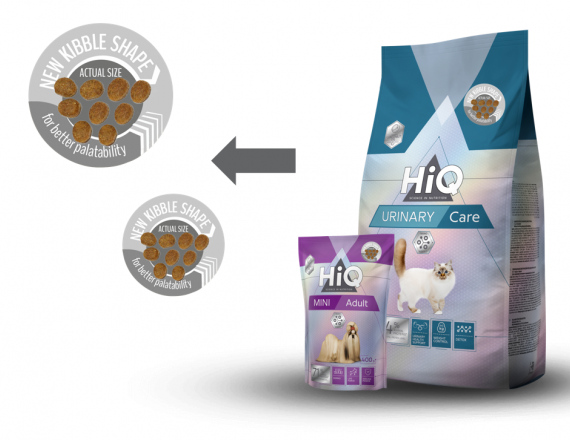
For pet owners and industry professionals alike, it stands to reason that small dogs would prefer smaller- sized kibbles and large breeds larger-sized kibbles. This common belief has also influenced how dog food is produced and marketed to small, mid-sized and large dogs, with a general correlation between dog food kibble size and the breed size the dog food brand is targeting.
However, new research evaluating the effect kibble size has on canine palatability has surprisingly revealed data to the contrary of this popular belief. Conducted by AFB International to help customers make informed decisions related to their dog food brands, the research found small, mid-size and large dogs preferred large-size kibble to small-size kibble.
The research data also provides a deeper understanding of the biological reasons dogs preferred larger kibble, and could lead to further discoveries in dog food palatability and performance improvement.
Experimental Design and Testing Protocol
Forty small dogs (30 pounds and under), 40 mid-sized dogs (30.1 – 54 pounds) and 40 large dogs (55 pounds and higher) were provided test diets consisting of three sizes of dry kibbles, small (7– 8 millimeter in diameter), medium (11 – 12 millimeter) and large (15– 16 millimeter). Test diets consisted of the same formulation for all sizes of kibble, including:
- type and lot of meal (corn and chicken meal- based diet)
- amount of fat
- AFB palatant and amount on each kibble
- moisture content (not significantly different)
- bulk density for each kibble
Test diets were the sole source of food provided to the dogs over a two-day period, with two bowls (Bowl A and Bowl B) presented each day. To analyze the data, AFB
International reviewed several factors, including intake ratio, consumption ratio, first choice and more.
Additional testing was conducted to help determine factors that may contribute to canines’ kibble preference, including:
• Texture analysis using three different types of probes to simulate dog chewing
• Electronicnoseandtonguetestingtodetermine degree of difference between kibble size in terms of flavor and aroma
Results
The research found that each size/panel of dogs preferred the large kibble size vs. the medium and small kibble sizes. The chart below provides a comparison of key results from large kibble vs. small kibble data findings.
The testing also found a strong link between a dog’s first choice and total consumption. Based on this data, further testing to measure the volatile compounds generated from each kibble size was conducted to determine what might have led to first choice. The large kibble had the highest levels of volatile flavor compounds, demonstrating that the large kibble emits more aromas to attract dogs to the food.
Additionally, texture data showed the large kibble had the highest texture scores from all probes used. Electronic nose and tongue testing found that large kibble is different from medium and small kibble.
Conclusions
The research showed that kibble size (diameter) in dry dog food does affect canine palatability, and the concentration of certain flavor components on the larger kibbles appeared to have driven the preference. Texture may also contribute to palatability, and further investigation could lead to product enhancements and innovations for dog food brands.
Comparison of Large Kibble Vs. Small Kibble, Key Results by Dog Size/Panel



